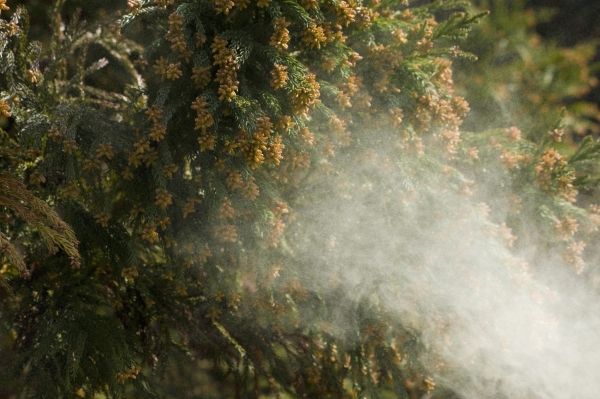Cedar fever season is upon us, and at a time when having a fever – or even catching a slight cold – is concerning, it’s more important than ever to understand the symptoms and source of this common Central Texas allergy. For starters, cedar fever isn’t a flu or a virus – it’s an allergic reaction to the pollen released by mountain cedar trees. In Texas, the predominant species of mountain cedar is the Ashe juniper.
“Cedar fever is the worst west of I-35, where you have primarily juniper mixed in with oaks and some other species,” said Jonathan Motsinger, the Central Texas Operations department head for the Texas A&M Forest Service. “And because all of those junipers are producing pollen at the same time, you’re going to get a higher concentration of pollen in the air.”
This is one of the primary factors contributing to cedar fever – the sheer quantity and density of Ashe junipers in Central Texas. According to Robert Edmonson, a biologist for the Texas A&M Forest Service, the pollen from Ashe junipers isn’t particularly allergenic or harmful – it’s just so concentrated that, even if you aren’t generally susceptible to allergies, it could still affect you.
Continue reading at Texas A&M University
Image via Texas A&M University


